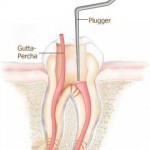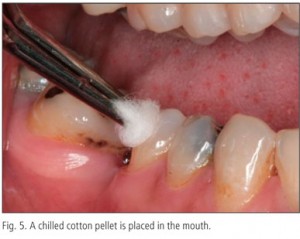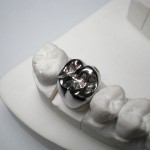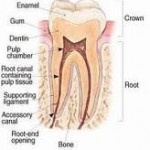A post and core is a dental restoration, which is used to sufficiently restore a tooth morphology followed by future restoration such as a crown, when there is no an adequate part of tooth hard tissue regarding to the required clinical indication of the case, due to loss of tooth structure as a result of decay, fracture or other causes. Post and cores can be referred as one of the foundation restorations. Continue reading
Tag Archives: root canal
What Happens at an Appointment with an Endodontist? Part 2
Continued from Part 1
Cold testing
A cold stimulus such as refrigerant spray is sprayed on a cotton pledget and applied to the tooth under investigation.
Heat testing
A heated source such as a GP stick is applied to the tooth. Continue reading
What Happens at an Appointment with an Endodontist? Part 1
Your dentist referred you to an endodontist for a root canal treatment that he/she finds difficult to do. However you started having the jitters about your endodontic appointment since this is a specialist you are seeking. This article will give you a gist on what happens at an appointment with an endodontist. Continue reading
Difference Between Periodontist & Endodontist
There are many fields of specialties in dentistry including periodontology and endodontology. Not many can tell a periodontist and an endodontist or other specialists apart as they are not exposed to these specialists. This article will help you tell the difference between a periodontist and an endodontist. Continue reading
Success Rate and Outcomes of Root Canal Therapy
 Every stakeholder in dental delivery system has different definitions and expectations regarding the outcome and result of root canal treatment. As a patient, you might be concerned about the function and esthetic of the endodontically treated tooth where as your dentist will judge the outcome of a root canal treatment based on the results of clinical and radiographic examinations. Continue reading
Every stakeholder in dental delivery system has different definitions and expectations regarding the outcome and result of root canal treatment. As a patient, you might be concerned about the function and esthetic of the endodontically treated tooth where as your dentist will judge the outcome of a root canal treatment based on the results of clinical and radiographic examinations. Continue reading
Understanding Dental Instruments ( Part 2 )
After discussing about exploring instruments, scaling instruments and restorative instruments, let’s move on to root canal instruments.
When the caries has extended to the pulp tissues, then you will need a root canal treatment. Continue reading
Root Canal Obturation Techniques
 Sealing the root canal system with a proper filling material is an important step in determining the success of root canal treatment. This is known as obturation which is done to prevent reinfection of microorganisms into the root canal system. Continue reading
Sealing the root canal system with a proper filling material is an important step in determining the success of root canal treatment. This is known as obturation which is done to prevent reinfection of microorganisms into the root canal system. Continue reading
The Ozone Treatment for Cavities
Can ozone be used to treat caries (cavities) without the need for drilling and filling? It seems that ozone therapy in dentistry is coming of age. If one of your teeth has only small areas of decay, we can often use ozone treatment to sterilise it. Bacteria that causes tooth decay is found deep within the tooth structure. Removing these bacteria would usually mean amputating the infected area of the tooth (and there’s always the risk that infected areas could be left behind). A further concern would be that the fillings put into the tooth are not a permanent solution, on average they last between 6 months and a couple of years. Each time the filling is replaced, the filling has to be larger and more of the tooth is damaged. This downward spiral usually leads to expensive dental reconstruction. Continue reading
The Disadvantages of Metal in Tooth Caps
Dental caps in general add a good deal of strength to a weakened or worn tooth, and if all conditions are favourable, a good tooth cap can last ten to fifteen years. Depending on your habits and the condition of your gums, there may be some drawbacks or benefits for you. Your dentist will advise which is best for you given several factors, such as how important appearance is to you. A tooth cap, also known as a dental crown, is a covering placed over a tooth and cemented into place. Materials used to make tooth caps include metal, resin, porcelain, or a combination of ceramic and metal. Continue reading
Root Canal Treatment- How is it performed?
A tooth consists of enamel, dentine, cementum and pulp. The pulp is a living tissue, inhabitated by nerve tissues, blood vessels and cells responsible for tooth formation and repair. Root canal therapy /treatment (endodontic therapy) involves removal of these structure which have been contaminated by bacteria and damaged permanently. The subsequent hollow space is cleaned, shaped and decontaminated using files and irrigants. The decontaminated space is then filled with inert filling material. After root canal therapy, the tooth will be ‘dead’ or non vital because it contains no living tissues. Continue reading





